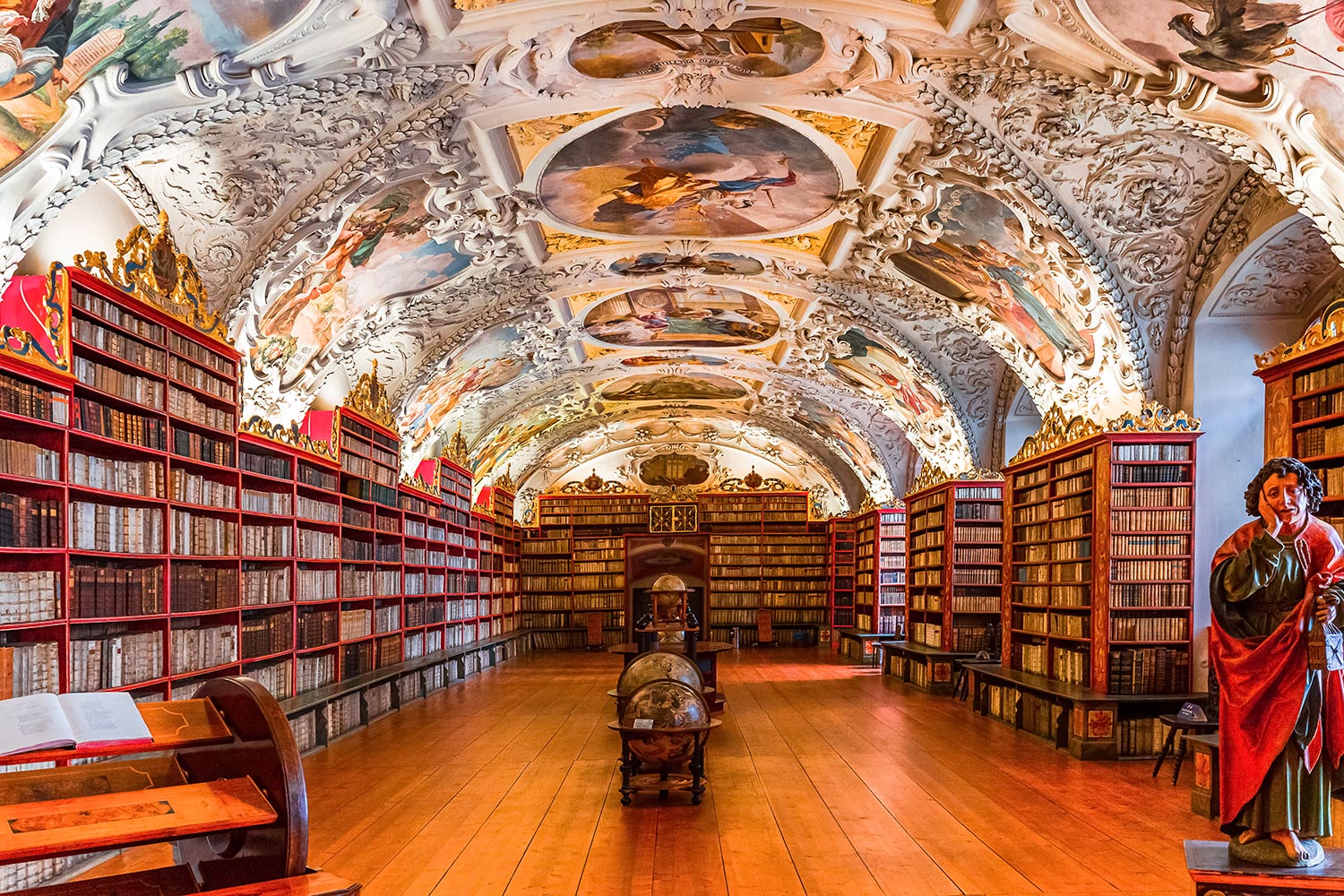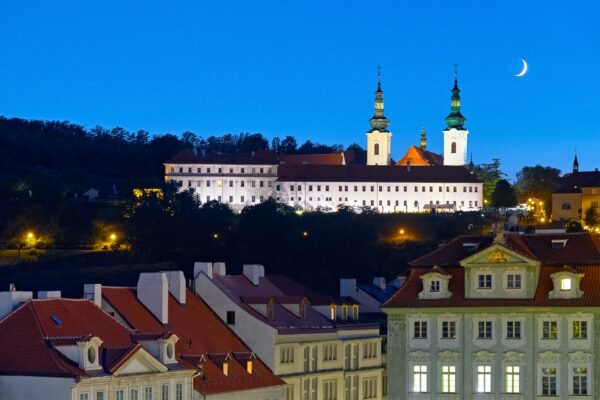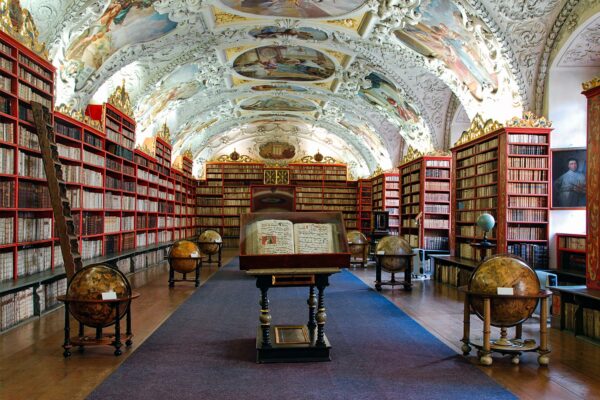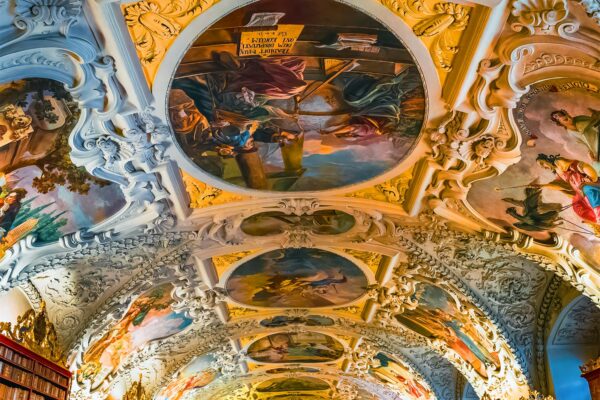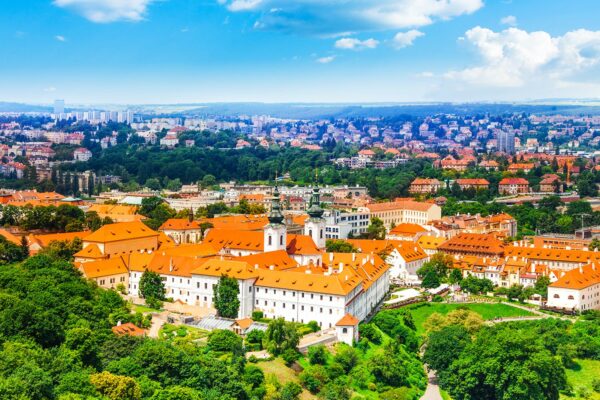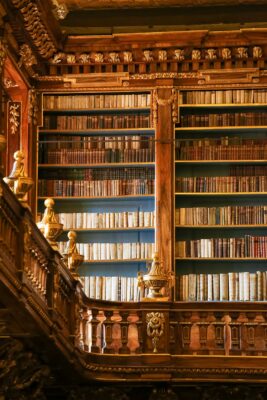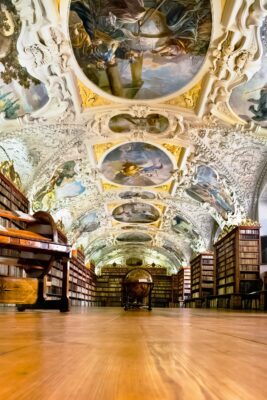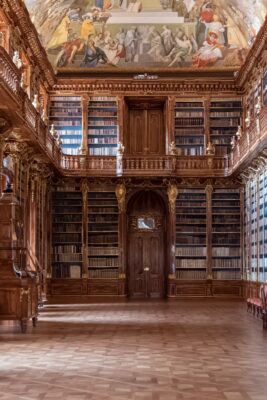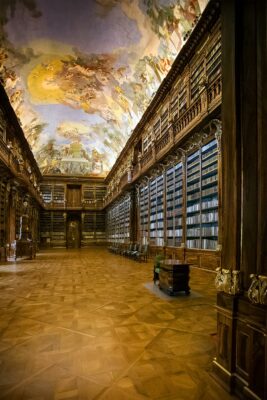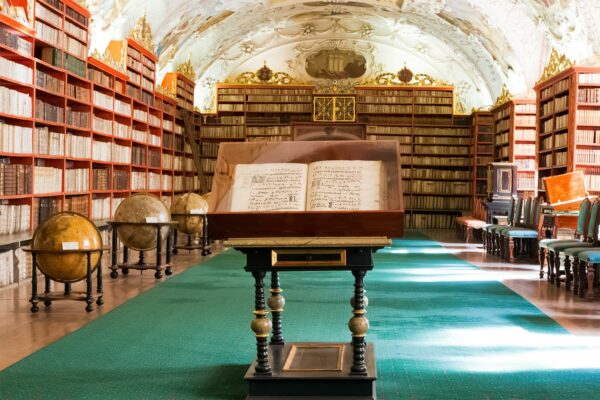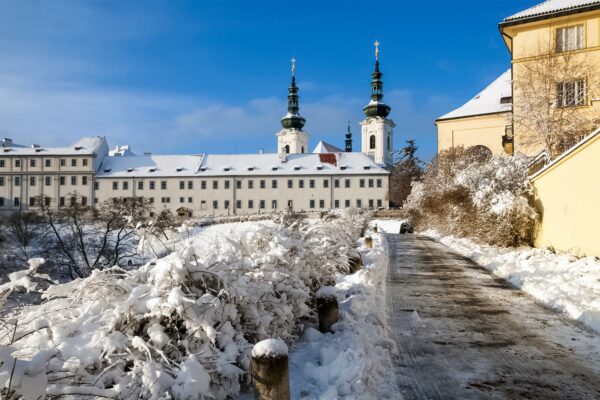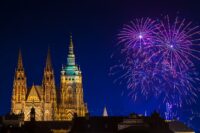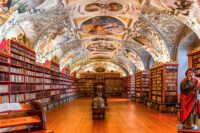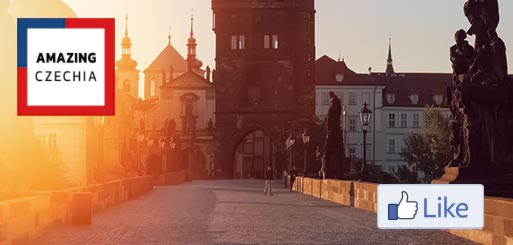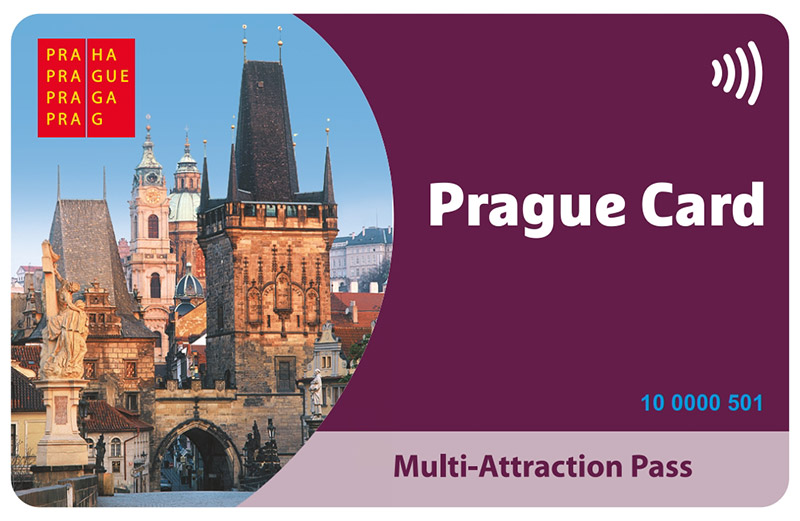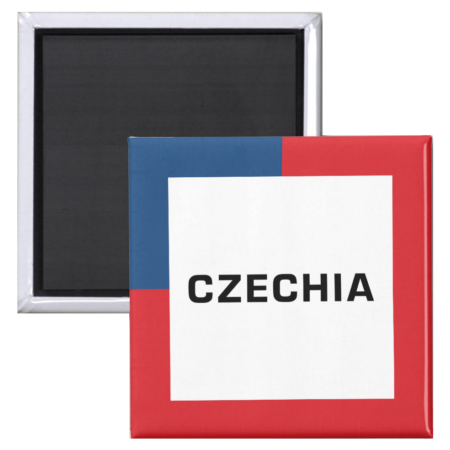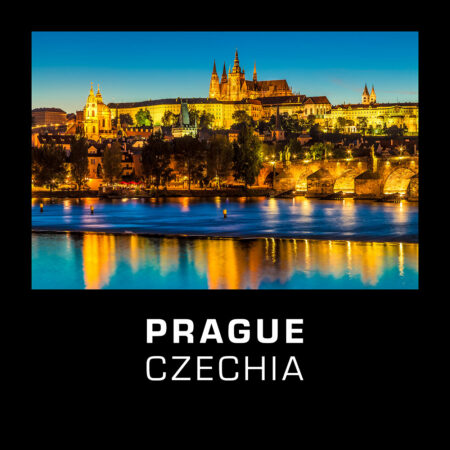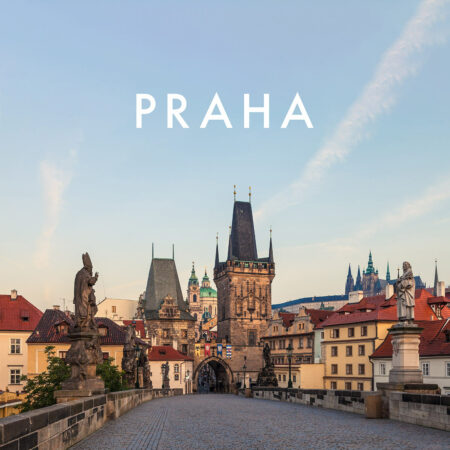Strahov Monastery (Strahovský klášter in Czech) is among the most enchanting sights of Prague and one of the architectural gems in all of Czechia. It’s located just a stone’s throw away from Prague Castle in the Strahov district of Prague, on the western edge of the Lesser Town, the heart of the Golden City.
There is a lot to see and do in the Strahov Monastery. Marvel at the beauty of the fascinating Strahov Library, study the details of amazing works of art in the Strahov Gallery and the MIRO Gallery, attend Mass in the impressive Romanesque Basilica of the Assumption of the Virgin Mary, and refresh yourself with a pint of locally brewed craft beer.
History
Strahov Monastery is known as the oldest Premonstratensian monastery in Bohemia. Founded in the year 1143 on the initiative of Jindřich Zdík, the bishop of Olomouc, it swiftly became a flourishing beacon of knowledge and spiritual life. Back then, it was one of the most extensive Romanesque buildings in Europe. After the devastating fire of 1258, the abbey was rebuilt in a Gothic style, surrounded by mighty fortifications. The complex also abounded many remarkable technical amenities for its age, including a sanitary sewer, underfloor heating system or a windmill.
It suffered a devastating decline during the Hussite Wars of the 15th century. As a significant centre of the Catholic Church, and a thorn in the side of the Czech Proto-Protestants, the monastery was left plundered by the Hussites. Recovery works followed at the turn of the 16th and 17th century. The year 1627 marked a special event. The remains of Saint Norbert of Xanten, founder of the Premonstratensian order, were carried to Prague and were solemnly buried in the Basilica of the Assumption of Our Lady. However, in 1648, the area was plundered once more, this time by the Swedish troops. Yet it rose from the ashes again, more beautiful than ever. After the 1648 incident, it was enlarged and redesigned in the Baroque style. The final great feature of the premises – the Strahov Library – was finished in 1797.
After the 1948 Czechoslovak coup d’état, religion, in general, fell into disfavour of the ruling regime. In 1950, the Premonstratensians were violently expulsed from Strahov by the Communists. In 1989, the Communist dictatorship fell. Shortly afterwards, the monastery was declared a National Cultural Monument, and it was returned to its former owners – the Premonstratensian Order, although in a very neglected state. Fortunately, costly restorations have helped to bring the light back to Strahov Monastery.
Highlights
Strahov Library (Strahovská knihovna) – It’s perhaps the most outstanding feature of the entire complex. A true spectacle of architecture brimming with splendour, housing over 200 thousand books. Its construction ended in 1797. The historical library consists of two halls - the older, Baroque Theological Hall and the newer, Classicist Philosophical Hall. The Theological Hall, as the name suggests, stores mainly spiritual literature, while the volumes inside the 2-storey tall, 10 metres wide, and 32 metres long Philosophical Hall cover many fields of knowledge, e.g. religion, pharmacy, maths, philosophy or astronomy.
The ceiling was painted by Franz Anton Maulbertsch, and his magnificent fresco depicts the spiritual evolvement of humanity. Near the hall, you can observe the Cabinet of Curiosities with a remarkable collection of scientific specimens. The passageway between the two main halls houses a unique xylotheque consisting of books with unorthodox wooden bookbinding.
The Strahov Library is accessible to the public. For further information for visitors, including current opening hours or entrance prices, please visit the official website.
Basilica of the Assumption of the Virgin Mary (Bazilika Nanebevzetí Panny Marie) – The basilica abounds features of various architectural styles and boasts a beautifully decorated nave. Its two white towers topped with golden spires are well noticeable from far away. The church is open for the regular public masses that take place daily. At the time of writing, they started at 7:15 AM and 6 PM (18:00) from Monday to Saturday, and on Sundays at 10:00 AM and 6 PM (18:00). During masses, the beautiful Gregorian chant sung by the monastery’s choir may be heard.
Strahov Gallery and Treasury (Strahovská obrazárna a klenotnice) – Strahov Gallery was established already in 1835. Nowadays, it contains an impressive collection of nearly 1500 pictures. The exhibition presents, for instance, the paintings of Bartholomeus Spranger, Hans von Aachen, Jan Moonstaert or Luca Cambiaso. The most compelling works of art can be seen in the ambit of the convent building.
The official webpage will help you find more information. You will find the entrance to the gallery in the courtyard behind the basilica.
Church of St. Roch (Kostel sv. Rocha) is a Renaissance-style church with Gothic features situated in the western part of the monastery. It currently houses the MIRO Gallery of contemporary art, one of the most popular private galleries in the city. Even though the exhibition is relatively small, it often presents genuine masterpieces from many renowned artists. Moreover, the calming atmosphere of the church’s interior is like a balm for the soul.
Strahov Monastery Brewery (Klášterní pivovar Strahov) – The Premonstratensian monks of the Strahov Monastery used to have a long tradition of beer brewing. Thanks to a group of enthusiasts, the local craft has been preserved to this day. You can taste their products at the restaurant located within the premises of the central courtyard. Cheers! Or as the Czechs say: Na zdraví!
Getting There
The main entrance to the Strahov Monastery is on Dlabačov Street, through a Baroque gate. Furthermore, the monastery is accessible by a few side entrances, for instance, from Pohořelec through the Monument of National Literature (house no. 8) or from the Raoul Wallenberg Promenade (promenáda Raoula Wallenberga).
The nearest public transport station is the Pohořelec tram stop served by lines no. 15 and 22. If you are keen on using the metro, the most convenient way is to exit on Malostranská station (Line A) and transfer to trams no. 15 (direction Bílá Hora) or 22 (direction Vypich). Alternatively, you can also use the Petřín Hill funicular up to the Petřín station, nearby the Petřín Tower, and then take approximately 10 minutes long stroll northwest through a park, witnessing some of the most mesmerizing views on the St Vitus Cathedral.


